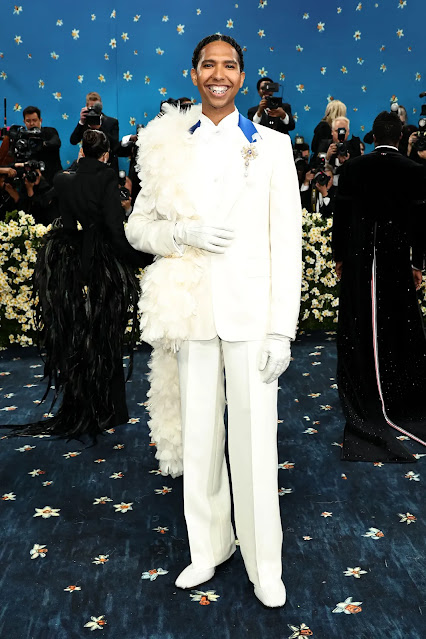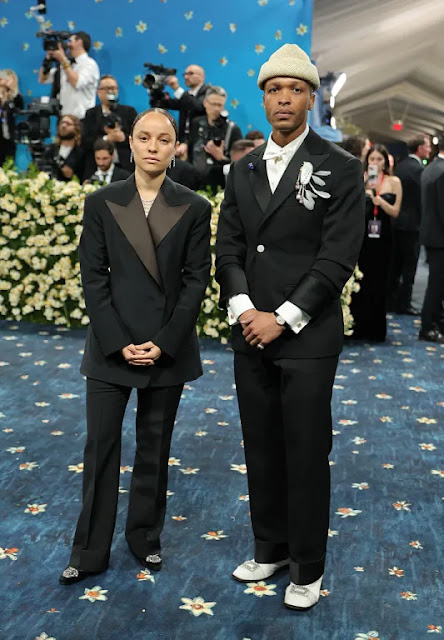From the Studio to the Staircase, Black Visionaries Keep it Fly on Fashion's Biggest Night.
 |
| Torkwase Dyson |
Torkwase Dyson’s presence was especially significant. Known for her rigorous engagement with spatial politics and abstraction, Dyson also designed the exhibition architecture for Superfine: Tailoring Black Style, opening at The Met on May 10. Her contribution to the show—on view through October 26—reflects a deep consideration of Black movement, form, and intentionality. That she graced the Met Gala red carpet just days before the exhibition’s debut underscores the multifaceted role she plays as both artist and designer of space.
Amy Sherald, whose portraiture captures the poise and inner life of Black subjects with a surreal clarity, brought her signature composure to the evening. Rashid Johnson, whose work navigates personal and collective anxieties through material experimentation, exuded a quiet complexity. Lauren Halsey, whose practice builds radical monuments to Black life in South Central Los Angeles, wore a look that channeled both the future and the familiar.
Eric N. Mack, a master of textile improvisation, and Jordan Casteel, whose lush portraits center the ordinary and the intimate, stood as exemplars of contemporary figuration and form. Arthur Jafa—filmmaker, theorist, and image-maker—carried the weight of memory and montage, of Black cinema as both record and revelation.
Photographer Tyler Mitchell, whose groundbreaking Vogue cover of Beyoncé in 2018 made history, continues to expand the possibilities of portraiture. His presence on the steps of the Met was a visual echo of his broader project—one that frames Black youth, beauty, and ease with dreamlike tenderness. Mitchell’s work reminds us that representation is not just about being seen, but about how one is seen: with softness, depth, and care.
Iké Udé, known for his stylized photographic portraits and ongoing interrogation of Black dandyism, brought his own vibrant visual language to the Gala, blurring the line between subject and spectacle. Costume designer Paul Tazewell—whose credits include Hamilton and West Side Story—offered a reminder that behind many iconic cultural moments is the hand of a Black designer shaping how history is costumed. Andre Walker, a quiet legend in fashion whose career has influenced both underground and mainstream aesthetics, lent the night an air of uncompromising creativity.
Soull & Dynasty Ogun, co-founders of the label L’Enchanteur, brought ancestral reverence and storytelling to the red carpet. Their wearable art reclaims adornment as a site of memory, magic, and self-determination.
The inclusion of Grace Wales Bonner, whose fashion merges diasporic research with spiritual elegance, felt entirely in step with the moment. And Antwaun Sargent, whose curatorial work continues to uplift and contextualize Black creativity across disciplines, appeared not just as a guest but as a steward of this cultural convergence.
Their presence at the Met Gala was not incidental—it was a collective assertion of visibility, intellect, and authorship. In a space that often privileges celebrity over substance, these artists represented a different kind of glamour—one grounded in vision, community, and the labor of making new worlds.
 |
| Tyler Mitchell |
 |
| Rashid Johnson and Sheree Hovsepian |










No comments:
Post a Comment